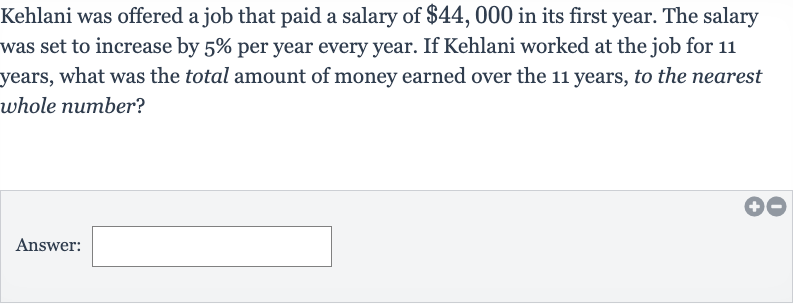AI tutor
Welcome to Bytelearn!
Let’s check out your problem:

Kehlani was offered a job that paid a salary of in its first year. The salary was set to increase by per year every year. If Kehlani worked at the job for years, what was the total amount of money earned over the years, to the nearest whole number?Answer:
Full solution
Q. Kehlani was offered a job that paid a salary of in its first year. The salary was set to increase by per year every year. If Kehlani worked at the job for years, what was the total amount of money earned over the years, to the nearest whole number?Answer:
- Determine Initial Salary: Determine the initial salary and the annual increase rate.Kehlani's initial salary is , and it increases by each year.
- Understand Salary Increase: Understand the nature of the salary increase.The salary increase is a percentage of the previous year's salary, which means it's a geometric sequence.
- Calculate Salary for Each Year: Calculate the salary for each year and keep a running total.Year : (initial salary)Year : Year : ...Year :
- Use Geometric Series Formula: Use the formula for the sum of a geometric series to find the total salary over years.The sum of terms of a geometric series with first term and common ratio is given by , where is the number of terms.Here, , , and .
- Substitute Values and Calculate: Substitute the values into the formula and calculate the sum.
- Perform Calculations: Perform the calculations.
- Round Total Salary: Round the total salary to the nearest whole number.Total salary over years =
More problems from Exponential growth and decay: word problems
QuestionGet tutor help
QuestionGet tutor help
QuestionGet tutor help
QuestionGet tutor help
QuestionGet tutor help
QuestionGet tutor help
QuestionGet tutor help
QuestionGet tutor help
QuestionGet tutor help
